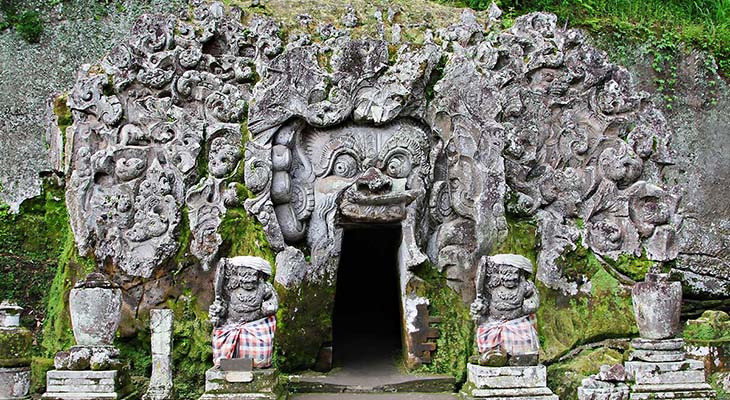Tomy Bali Driver is one of the providers of local bali tour program that prioritizes customer satisfaction with the motto "serve with heart". Here, we provide package tour packages with relatively cheap price or below price if you order directly in bali. We can guarantee your comfort while on vacation, ranging from the convenience of making payments to convenience while in tourist destinations.

Goa Gajah, or Elephant Cave, is located on the island of Bali near Ubud, in Indonesia. Built in the 9th century, it served as a sanctuary.
Although the exact origins of the cave are uncertain, it is believed to have been built as place for spiritual meditation. One folklore relates that it was created by the fingernail of the legendary giant Kebo Iwa. However, examining its style, the sanctuary was probably dated from the 11th century Bali Kingdom. The complex contains both Hindu and Buddhist imagery, as the cave contains lingam and yoni, symbol of Shiva, and the image of Ganesha, while by the river there are carved images of stupas and chattra, imagery of Buddhism.
The temple is characterised by menacing faces that are carved into the stone - who's purpose is assumed to be the warding off of evil spirits. The primary figure was once thought to be an elephant, hence the nickname Elephant Cave. Other sources state that it is named after the stone statue of the Hindu God Ganesh (characterised by having the head of an elephant) located inside of the temple. The site is mentioned in the Javanese poem Desawarnana written in 1365. An extensive bathing place on the site was not excavated until the 1950s. To reach the entrance of the cave, you need to walk down a long flight of stairs. There is not an accessible entrance. The inside of the temple is small and usually has trails of white smoke from the incense burning. Visitors wearing shorts will be issued a sarong to tie around the waist before entering the courtyard.